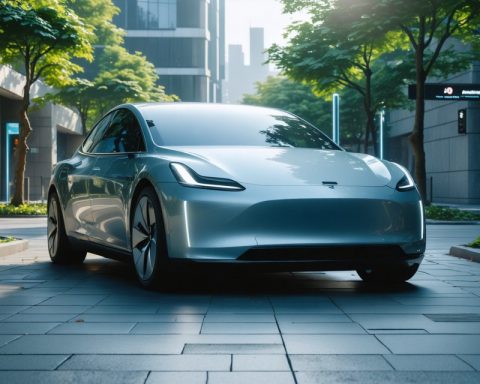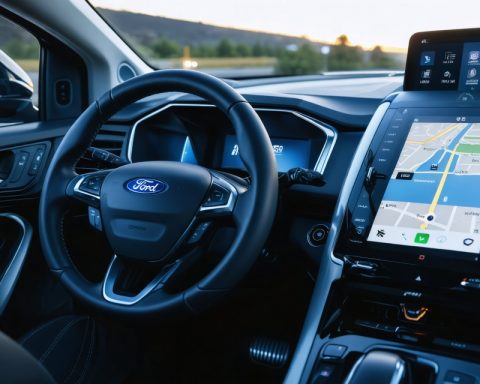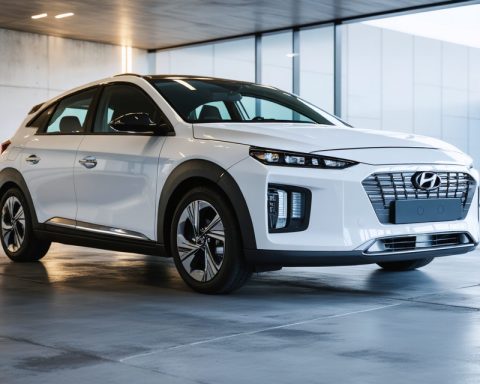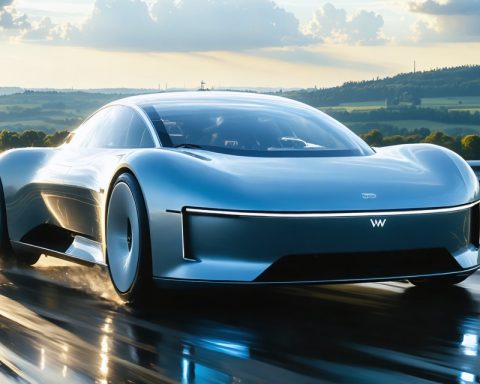- Kia Corp is advancing hybrid vehicle production in Georgia, aligning with U.S. market demands as electric vehicle interest stabilizes.
- The move is part of Hyundai Motor Group’s adaptive strategy, responding to fluctuating EV subsidies and broader market conditions.
- Hyundai’s Georgia facility will see a capacity boost from 300,000 to 500,000 vehicles, with Kia models comprising 40% of output.
- This expansion is part of a $21 billion investment, navigating U.S. trade dynamics, with Kia targeting 1.25 million annual sales in America.
- Kia’s stateside hybrid production showcases a commitment to resilience and innovation within the U.S. automotive landscape.
- The initiative marks a shift in global automotive narratives, blending gasoline and electric technology for a sustainable future.
Amid the lush, sprawling landscapes of Georgia, something extraordinary is taking root—an industrial evolution that finds its inspiration not in the distant future but in the pressing demands of the present. South Korea’s automotive titan, Kia Corp, is steering boldly into the hybrid horizon, aligning its ambitions with the changing winds of the American market. As demand for electric vehicles shows signs of a plateau, Kia’s strategic pivot towards hybrid production in the United States marks a brilliant maneuver, blending innovation with pragmatism.
The ambitious production plans are deeply woven into the fabric of Hyundai Motor Group’s broader vision. In 2022, with fanfare under the Biden administration’s pro-EV policies, Hyundai unveiled its vision for an all-electric factory in Georgia. However, in a landscape where the political climate is as unpredictable as the weather, Hyundai quickly recalibrated its strategy. The current administration’s wavering support for electric vehicle subsidies prompted Hyundai to introduce an expanded toolkit of hybrid technologies into the planned facility.
The new production lines at Hyundai’s Georgia plant will soon hum with the synergy of hybrid technology, a fusion of engineering that captures both the spirit of innovation and the demands of efficiency. Kia vehicles are set to account for a substantial 40% of the facility’s output, weaving Kia’s distinct identity into the tapestry of American automotive manufacturing. This bold move promises to elevate Kia’s U.S. sales trajectory to an impressive 1.25 million vehicles annually, a striking leap from its current sales.
A crucial factor underpinning this ambitious endeavor is Hyundai’s plan to supercharge the Georgia plant’s capacity, revving up from an initial plan of 300,000 vehicles to a staggering half a million. This expansion is part of a monumental $21 billion investment journey embarked upon by Hyundai in collaboration with Trump’s administration, now navigating the complex terrain shaped by international trade policies. Recent announcements of hefty 25% import tariffs cast a shadow over international manufacturers, presenting both a challenge and an opportunity to deepen roots in American soil.
South Korea, standing as the second-largest automotive exporter to the U.S. after Mexico, finds itself in a delicate dance with these new trade dynamics. Yet, amid these shifts, Kia’s decision to produce its hybrid vehicles stateside not only illustrates an adaptive strategy but also signifies a commitment to building a more resilient and responsive infrastructure within the U.S.
The transformation of the Georgia plant into a hybrid powerhouse represents more than just a response to changing regulations and market conditions. It embodies a forward-thinking mindset—one that embraces complexity with creativity and foresight. As Kia accelerates its trajectory, the automotive field becomes not just a sector but a stage where the actors are the architects of a new age of mobility.
In this unfolding story, the enduring message is clear: inertia is no way forward. As Kia and Hyundai navigate the nuances of global demand, regulatory landscapes, and technological innovations, they cement their roles as pioneers not just in market share, but in crafting a new narrative for mobility that promises to blend the best of both worlds—gasoline and electric. It’s a bold, hopeful step towards a future where hybrid vehicles lead the drive to a more sustainable tomorrow.
The Hybrid Revolution: How Kia and Hyundai are Redefining the American Automotive Landscape
Introduction
The transformation of Kia and Hyundai’s strategies marks a significant shift in the global automotive industry. With electric vehicle (EV) demand stabilizing, these South Korean giants are redefining their U.S. operations by pivoting towards hybrid technology. Let’s delve deeper into this strategic maneuver and uncover additional insights.
The Hybrid Shift: Key Facts
1. Market Trends and Analysis:
– The hybrid vehicle market is projected to grow significantly as consumers prioritize fuel efficiency and environmental considerations. According to the International Energy Agency (IEA), hybrid vehicles are expected to bridge the gap before a broader shift to full EV adoption.
– The U.S. continues to see substantial sales of hybrid vehicles, appealing to those who seek a blend of traditional and electric drivetrains for convenience and versatility.
2. Technological Innovations:
– Kia and Hyundai are integrating cutting-edge hybrid technologies, including regenerative braking and enhanced energy management systems, to maximize efficiency and performance.
– These advancements allow hybrids to provide superior mileage and reduced emissions compared to conventional gasoline vehicles.
3. Industry and Economic Impact:
– The expansion of Hyundai’s Georgia plant is anticipated to create thousands of new jobs, bolstering local economies and supporting ancillary industries.
– By manufacturing hybrids domestically, Kia can mitigate potential risks from import tariffs and benefit from favorable tax incentives for producing eco-friendly vehicles in the U.S.
4. Hybrid vs. Electric Debate:
– While hybrids offer immediate environmental benefits, the debate continues about whether investment should pivot fully towards electric vehicles. Industry experts argue that hybrids are a crucial step in the transition to a zero-emissions future, providing a practical intermediate solution.
Real-World Use Cases and Benefits
– Consumer Considerations:
– Hybrids provide a cost-effective alternative to EVs, particularly in regions with limited charging infrastructure.
– They are ideal for individuals who face long commutes or reside in areas with fluctuating fuel prices.
– Sustainability and Environment:
– Hybrid cars balance lower emissions produced during operation with reduced dependency on fossil fuels, contributing to sustainability goals.
Potential Challenges and Limitations
– Consumer Education:
– It’s crucial for companies to educate consumers on the benefits and functionalities of hybrids, which may sometimes be less understood than pure EVs.
– Technological Advances:
– Ensuring technological compatibility and overcoming the perception that hybrids are merely a transitional technology is essential for sustained growth.
Pros and Cons Overview
– Pros:
– Enhanced fuel economy.
– Lower emissions compared to gasoline vehicles.
– Government incentives and potential cost savings.
– Cons:
– Higher upfront costs compared to traditional vehicles.
– Potential for complexity in maintenance due to the dual powertrain.
Conclusion: Actionable Tips
– For Consumers:
– Consider hybrid vehicles if you desire lower fuel costs and wish to reduce your carbon footprint without committing to a full EV infrastructure.
– For Industry Enthusiasts:
– Keep an eye on hybrid technology advancements and government policies as these will shape market dynamics.
Further Resources
For more on Kia’s innovative strategies and global expansion, visit Kia. To explore Hyundai’s extensive vehicle lineup and manufacturing advancements, view their offerings at Hyundai.
By embracing hybrid technology, Kia and Hyundai are not only responding to immediate market demands but are also setting a sustainable trajectory for the future of mobility.












